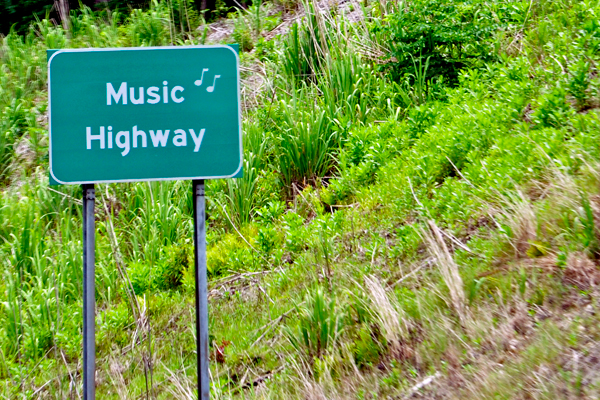 |
Tennessee State Capitol Building |
The Tennessee State Capitol stands today much as it did when it first opened in 1859, and is a magnificent tribute to the people of Tennessee. This graceful structure was designed by noted architect William Strickland who considered it his crowning achievement. When Strickland died suddenly during construction in 1854, he was buried in the north facade of the Capitol.
The cornerstone for the building was laid on July 4, 1845, and construction finished in 1859. The grounds of the State Capitol contain statues honoring Sam Davis, Sgt. Alvin York, and Presidents Andrew Jackson and Andrew Johnson. The tombs of President and Mrs. James K. Polk are also located on the Capitol grounds. |
|
|
|
|
|
|
Below: Tennessee State Library and Archives Building
|
The Tennessee State Library and Archives (TSLA), established in 1854, currently operates as a unit of the Tennessee Department of State. According to the Tennessee Blue Book, the Library and Archives collects and preserves books and records of historical, documentary and reference value, and encourages and promotes library development throughout the state. This mandate can be found in Tennessee Code Annotated, Title 10, Chapters 1-8.
Although most states operate their libraries and archives as separate agencies, Tennessee is one of a handful of states whose library and archives are administered jointly. |
Above quote (and most others on this website) From Wikipedia, the free encyclopedia
|
|
|
Below: Ryman Auditorium -
(formerly Grand Ole Opry House and Union Gospel
Tabernacle) is a 2,362-seat live performance venue, located
at 116 5th Avenue North, in Nashville, Tennessee and is best known as
the most famous former home of the Grand Ole Opry. It is owned and operated
by Ryman Hospitality Properties, Inc. |
|
Schermerhorn Symphony
Center is a symphony center in downtown Nashville, Tennessee.
Ground was broken for construction on December 3, 2003. The center formally
opened on September 9, 2006, with a gala concert conducted by Leonard
Slatkin and broadcast by PBS affiliates throughout the state. The center
is named in honor of Kenneth Schermerhorn, who was the music director
and conductor of the Nashville Symphony from 1983 until his death in
2005; the center was named before maestro Schermerhorn's death.
The 2006 Symphony Center is a prominent example of 21st century New Classical Architecture. |
Below: Music note bicycle racks, a water
fountain, and a statue |
|
|
Quote on the statue shown below: "The
Nashville Symphony expresses its most sincere gratitude to the citizens
of Nashville for their love of all forms of music and making the Schermerhorn
Symphony Center a reality." |
|
Below: The
John Seigenthaler Pedestrian Bridge a.k.a. The Shelby Street Pedestrian
Bridge |
|
|
 The John Seigenthaler Pedestrian Bridge, formerly the Shelby Street Pedestrian Bridge, connects downtown Nashville to the residential suburbs of East Nashville. It was built from 1907-09 and was originally named the Sparkman Street Bridge. The county employed Howard M. Jones, Chief Office Engineer of the Nashville, Chattanooga, and St. Louis Railway, to design and supervise the construction. Jones worked with local contractor Foster and Creighton Company and Gould Contracting Company of Louisville. The bridge contains 48 spans including four steel trusses and two reinforced concrete trusses. Spans over the old Tennessee Central Railroad tracks (now CSX) are the only concrete trusses identified in Tennessee. The bridge was closed to automobile traffic in 1998 and has been restored for pedestrian use, providing outstanding views of the river and downtown skyline. It is on the National Register of Historic Places. The John Seigenthaler Pedestrian Bridge, formerly the Shelby Street Pedestrian Bridge, connects downtown Nashville to the residential suburbs of East Nashville. It was built from 1907-09 and was originally named the Sparkman Street Bridge. The county employed Howard M. Jones, Chief Office Engineer of the Nashville, Chattanooga, and St. Louis Railway, to design and supervise the construction. Jones worked with local contractor Foster and Creighton Company and Gould Contracting Company of Louisville. The bridge contains 48 spans including four steel trusses and two reinforced concrete trusses. Spans over the old Tennessee Central Railroad tracks (now CSX) are the only concrete trusses identified in Tennessee. The bridge was closed to automobile traffic in 1998 and has been restored for pedestrian use, providing outstanding views of the river and downtown skyline. It is on the National Register of Historic Places.
|
|
|
|
|
|
|
Below: Views of Nashville from the bridge |
|
|
|
|
|
|
|
|
Below: The two RV Gypsies liked the architectural
design of the AT&T building. It reminded them of Batman. |
|
|
Below: There were lots of
"Pedal Taverns" around the town, and everyone on
the vehicle was cheering and having lots of fun. Sometimes Karen Duquette
wishes she could travel with a group and do something like this too.
It would not be anything that Lee Duquette would enjoy. |
|
|
|

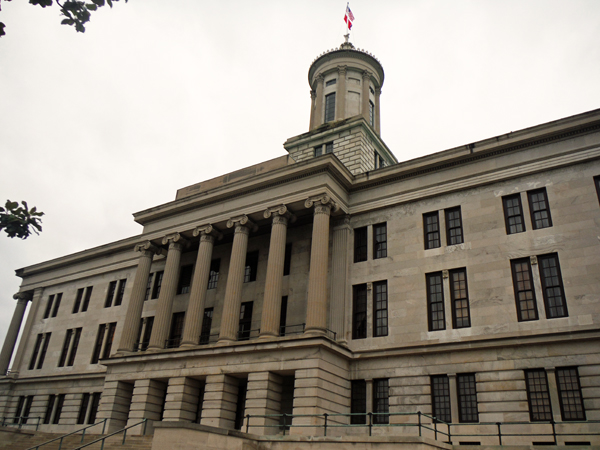
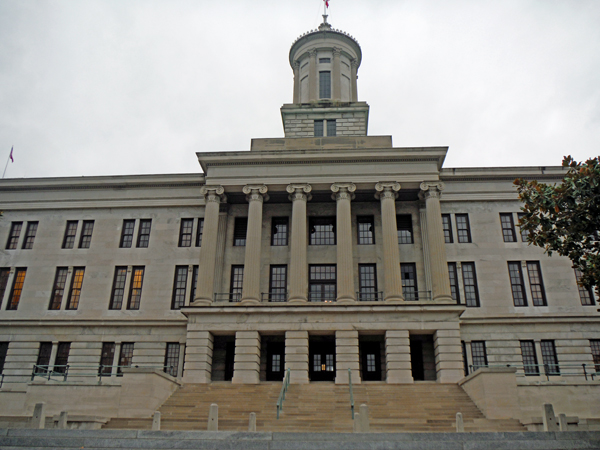
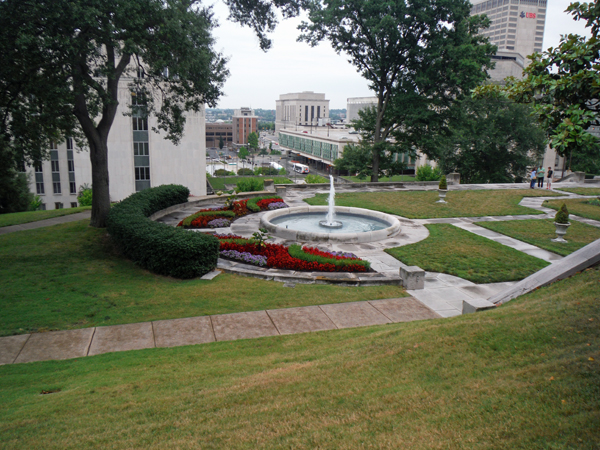
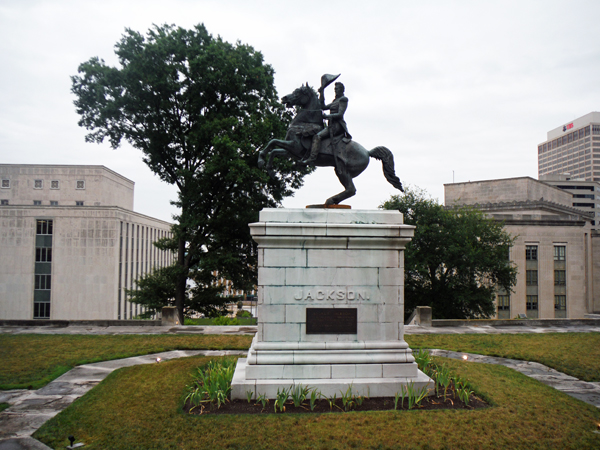




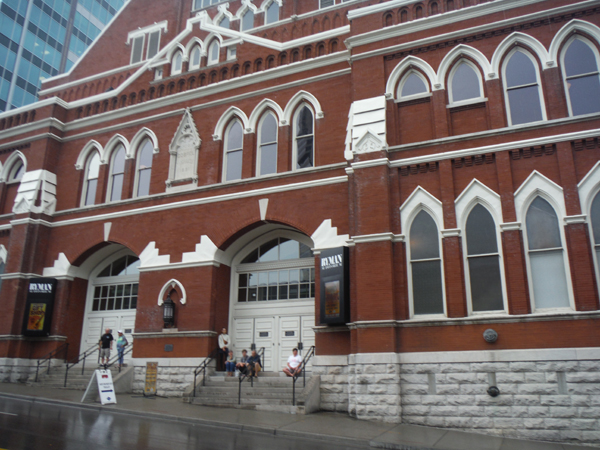
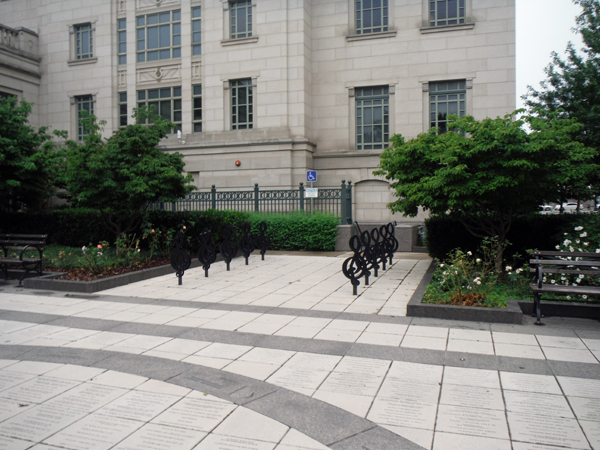




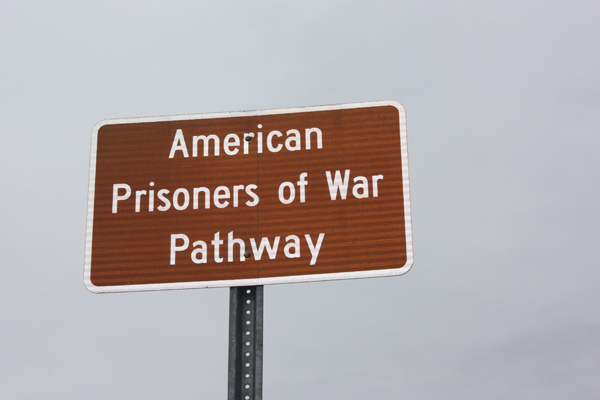

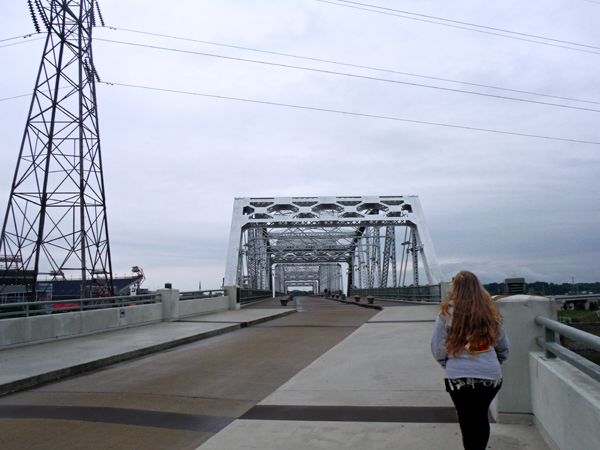


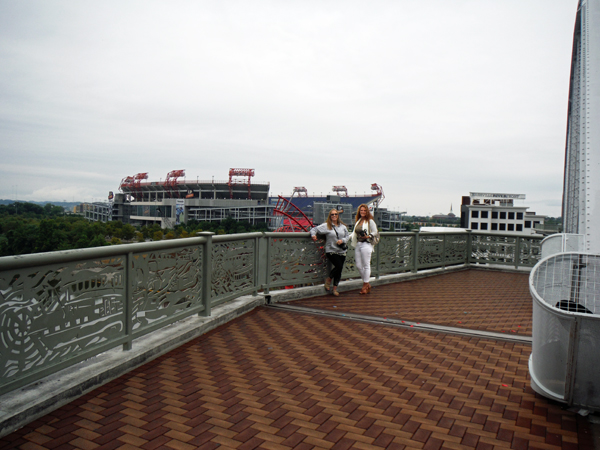
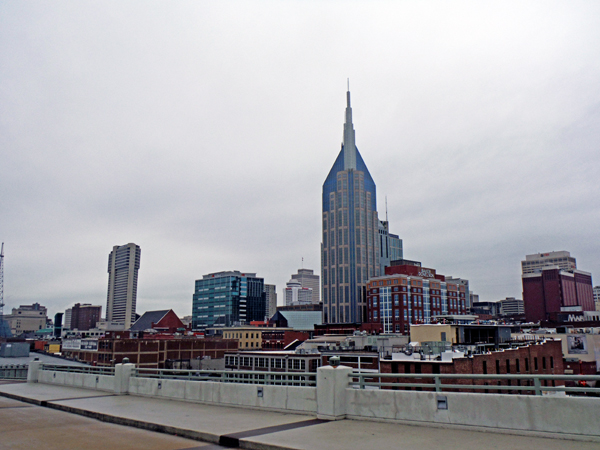
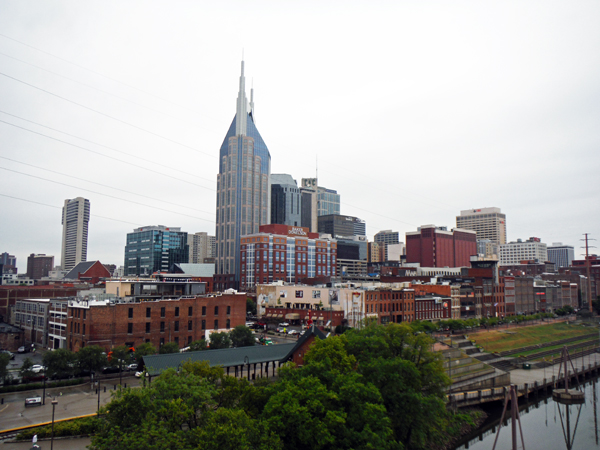
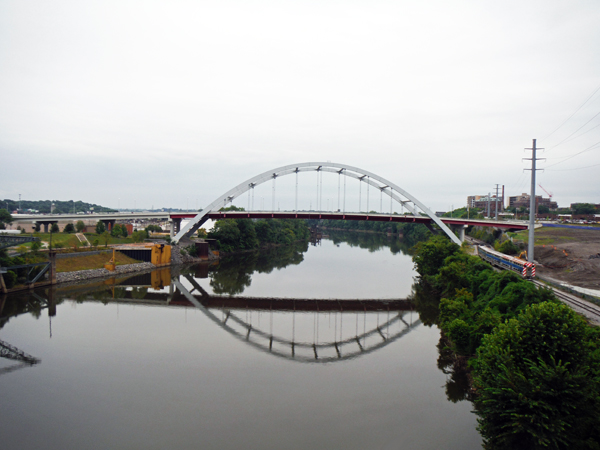



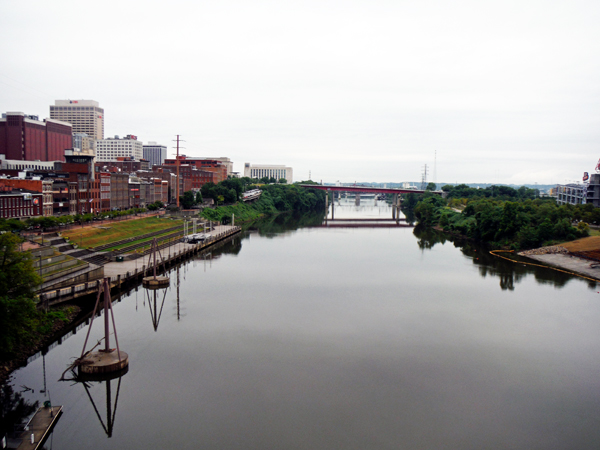

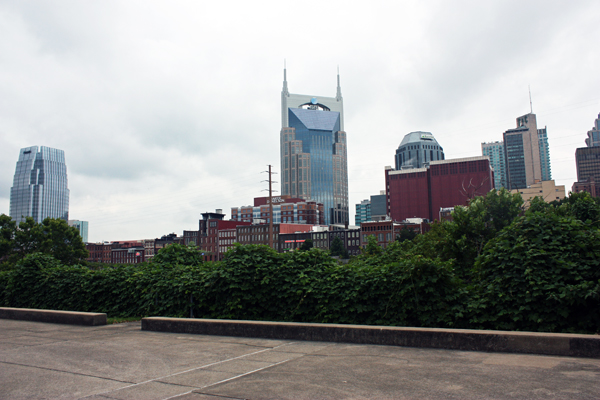
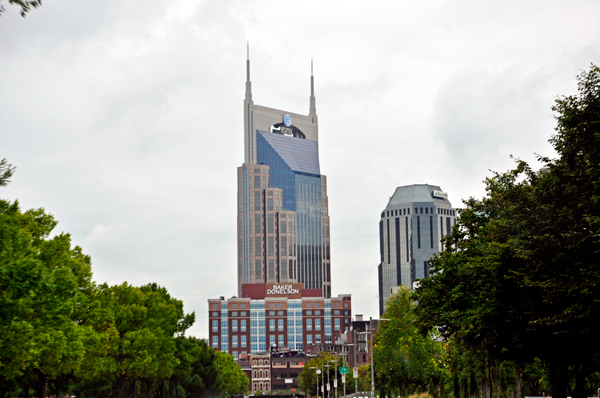

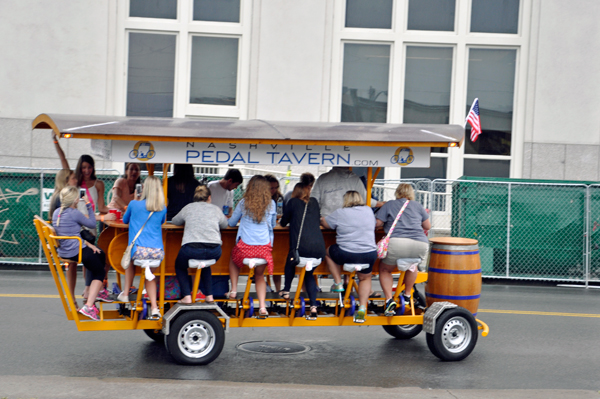

























 The John Seigenthaler Pedestrian Bridge, formerly the Shelby Street Pedestrian Bridge, connects downtown Nashville to the residential suburbs of East Nashville. It was built from 1907-09 and was originally named the Sparkman Street Bridge. The county employed Howard M. Jones, Chief Office Engineer of the Nashville, Chattanooga, and St. Louis Railway, to design and supervise the construction. Jones worked with local contractor Foster and Creighton Company and Gould Contracting Company of Louisville. The bridge contains 48 spans including four steel trusses and two reinforced concrete trusses. Spans over the old Tennessee Central Railroad tracks (now CSX) are the only concrete trusses identified in Tennessee. The bridge was closed to automobile traffic in 1998 and has been restored for pedestrian use, providing outstanding views of the river and downtown skyline. It is on the National Register of Historic Places.
The John Seigenthaler Pedestrian Bridge, formerly the Shelby Street Pedestrian Bridge, connects downtown Nashville to the residential suburbs of East Nashville. It was built from 1907-09 and was originally named the Sparkman Street Bridge. The county employed Howard M. Jones, Chief Office Engineer of the Nashville, Chattanooga, and St. Louis Railway, to design and supervise the construction. Jones worked with local contractor Foster and Creighton Company and Gould Contracting Company of Louisville. The bridge contains 48 spans including four steel trusses and two reinforced concrete trusses. Spans over the old Tennessee Central Railroad tracks (now CSX) are the only concrete trusses identified in Tennessee. The bridge was closed to automobile traffic in 1998 and has been restored for pedestrian use, providing outstanding views of the river and downtown skyline. It is on the National Register of Historic Places.



